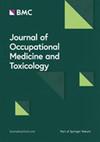俄罗斯对乌克兰战争对环境健康的影响
IF 2.7
4区 医学
Q2 PUBLIC, ENVIRONMENTAL & OCCUPATIONAL HEALTH
Journal of Occupational Medicine and Toxicology
Pub Date : 2024-01-05
DOI:10.1186/s12995-023-00398-y
引用次数: 0
摘要
俄罗斯于 2022 年 2 月入侵乌克兰,引发了欧洲自二战以来最大规模的武装冲突。乌克兰政府机构、民间社会组织和国际机构收集了大量有关战争对环境影响的数据,而环境往往是战争的沉默受害者。我们回顾了这些数据,并强调了国际治理在战时保护环境方面的局限性。我们以 "乌克兰"、"俄罗斯"、"战争"、"环境"、"健康"、"人权"、"国际人道法"、"国际人权法"、"生态灭绝 "和 "战争罪 "为搜索关键词,对学术、机构和媒体信息资源进行了综合审查。战争期间有近 50 万军人伤亡,3 万多平民伤亡。战争对健康的间接影响可能导致更多平民发病和死亡。战争导致 1100 多万人流离失所。俄罗斯军队对民用基础设施造成了广泛破坏。战争破坏了乌克兰的经济,降低了许多国家的粮食和能源安全。战争对环境造成的破坏超过 564 亿美元。空气、水和土壤普遍受到化学污染,乌克兰 30% 的地区受到地雷和未爆弹药的污染。景观破坏、炮击、野火、森林砍伐和污染对乌克兰 30% 的保护区造成了不利影响。俄罗斯夺取 Zaporizhzhia 核电站和破坏新卡霍夫卡大坝,带来了长期环境灾难的风险。这些环境影响大多威胁着人类健康。除了巨大的人员损失,俄罗斯对乌克兰的战争还对自然环境和建筑环境造成了破坏性影响。国际法规定,战争方法的实施必须适当考虑保护和维护自然环境。公正持久的和平除其他要求外,还必须重建和恢复乌克兰的自然环境和建筑环境。需要对所有战争的环境后果进行调查,并采取更有效的措施在战争期间保护环境。本文章由计算机程序翻译,如有差异,请以英文原文为准。
The environmental health impacts of Russia’s war on Ukraine
Russia’s invasion of Ukraine in February 2022 ignited the largest armed conflict in Europe since World War II. Ukrainian government agencies, civil society organizations, and international agencies have gathered an unprecedented amount of data about the impact of war on the environment, which is often the silent victim of war. We review these data and highlight the limitations of international governance for protection of the environment during time of war. We performed an integrative review of academic, institutional, and media information resources using the search terms “Ukraine”, “Russia”, “war”, “environment”, “health”, “human rights”, “international humanitarian law”, “international human rights law”, “ecocide”, and “war crimes”. Nearly 500,000 military personnel have been killed or wounded during the war, and more than 30,000 civilians have been killed or injured. Indirect health effects of the war have likely accounted for an even greater amount of civilian morbidity and mortality. The war has displaced more than 11 million people. Russia’s military forces have caused extensive damage to civilian infrastructure. The war has devastated Ukraine’s economy and reduced food and energy security in many countries. The war has caused more than $56.4 billion in damage to the environment. There has been widespread chemical contamination of air, water, and soil, and 30% of Ukraine has been contaminated with landmines and unexploded ordnance. Landscape destruction, shelling, wildfires, deforestation, and pollution have adversely affected 30% of Ukraine’s protected areas. Russia’s seizure of the Zaporizhzhia Nuclear Power Plant and destruction of the Nova Kakhovka Dam have posed risks of long-term environmental catastrophe. Most of these environmental impacts threaten human health. In addition to enormous human costs, Russia’s war on Ukraine has had devastating impacts on the natural environment and the built environment. International law mandates that methods of warfare must be implemented with due regard to the protection and preservation of the natural environment. A just and lasting peace necessitates, among other requirements, rebuilding and restoration of Ukraine’s natural environment and built environment. The environmental consequences of all wars need to be investigated and more effective measures need to be implemented to protect the environment during war.
求助全文
通过发布文献求助,成功后即可免费获取论文全文。
去求助
来源期刊

Journal of Occupational Medicine and Toxicology
PUBLIC, ENVIRONMENTAL & OCCUPATIONAL HEALTH-
CiteScore
6.00
自引率
0.00%
发文量
23
审稿时长
19 weeks
期刊介绍:
Aimed at clinicians and researchers, the Journal of Occupational Medicine and Toxicology is a multi-disciplinary, open access journal which publishes original research on the clinical and scientific aspects of occupational and environmental health.
With high-quality peer review and quick decision times, we welcome submissions on the diagnosis, prevention, management, and scientific analysis of occupational diseases, injuries, and disability. The journal also covers the promotion of health of workers, their families, and communities, and ranges from rehabilitation to tropical medicine and public health aspects.
 求助内容:
求助内容: 应助结果提醒方式:
应助结果提醒方式:


